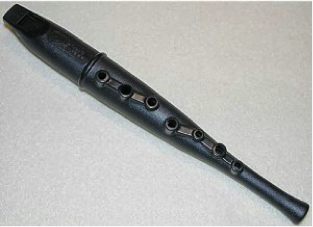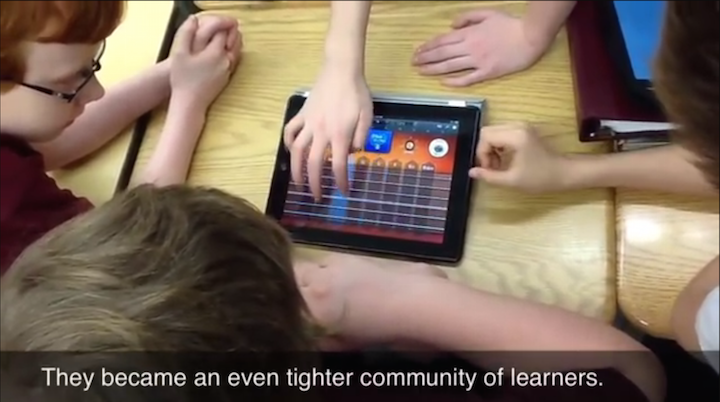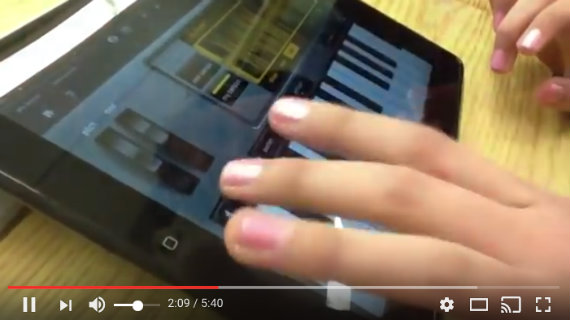Introducing Music to All – In All of Our Schools

Fourth grade was my favorite of all the elementary years. We had mastered the dreaded cursive writing as third graders and learned our multiplication tables “by heart.” We felt more than equal to the task of long division which awaited us. Fourth grade was the year we had Mrs. Brown. She was young, and pretty, and fun, and nice.
Fourth grade was the year we embarked on our study of Alabama history. We learned all about the Indian tribes, DeSoto’s journey, and the road to statehood. Our year culminated in a trip to the state capitol building and the obligatory visit to the “First White House of the Confederacy.”
But the best part of all was that fourth grade was the year we learned the Tonette.
Not just the ones who expressed an interest.
Not just the ones who demonstrated the greatest aptitude.
All of us.

In fourth grade, our music teacher was stretched thin. Education funding was tight then, too. So, Mrs. Brown and the other fourth-grade teachers had a plan.
When the music teacher was in our room, so was Mrs. Brown. She listened as he taught. She learned right along with us. As a result, music was not something we had only when it was our day for the music teacher to visit our classroom. Playing the Tonette was a natural part of every school day, because we had Mrs. Brown.
Yesterday and today
We could take the Tonette and music book home, and therefore playing a musical instrument was something we could enjoy during leisure time. As I look back decades later and reflect on those parts of my formal education which made a difference and which did not, fourth grade and the Tonette shine.
How could that fourth-grade experience have been better? I suppose if we had piano labs for each fourth-grade class, that experience would have been better. After all, when it comes to understanding music reading, knowledge of the piano keyboard is, without a doubt, the best foundation. Sharps and flats, intervals, chords, and scales: it all becomes easier to understand when you can visualize the keyboard.
The ideal situation would have been for each of us to have our own piano keyboard. Furthermore, if each of us had a piano keyboard at home, we could extend our learning and play a music instrument during our leisure time.
“Ideal, but impossible,” you might say. Can you imagine the expense, not to mention the space required? Impossible then and impossible now. After all, today’s reality is that music been eliminated from the curriculum altogether in many places.
Ironically, while we can’t seem to offer what Mrs. Brown’s fourth-graders had, what we can offer is even better, and it is something we could offer our students today with equipment we already have.
Technology makes music easily doable
Technology has assumed a major role in education, and providing the tools to make it effective has become a focal point across the curriculum. How does that point impact music in the regular classroom?
It boils down to one simple question: Does your school have at least one classroom set of iPads or other touch-tablet devices? If the answer is “Yes,” then the idea of a piano keyboard for every student becomes not only possible, but easy. This post will give you ideas for specific software you might download.
When we look at piano keyboard apps, the options, including free ones, are plentiful. If the tablets are available, the apps are but a download away. So, too, are the teaching materials for beginning keyboard.
The future makes it imperative
What kind of education do we want for our students? Ronald Reagan told us, “…The existence of strong music and fine arts curricula are important to keeping the humanities truly humanizing and liberal arts education, truly liberating.”
John F. Kennedy told us, “I look forward to an America which will reward achievement in the arts ….And I look forward to an America which commands respect throughout the world not only for its strength but for its civilization as well.”
The NAMM Foundation shares research with us: “Schools that have music programs have an attendance rate of 93.3% compared to 84.9% in schools without music programs.”
Music in Our Schools Month: A good time to start this discussion
The challenges of time and money are not new. The best of us have always found ways to provide quality experiences for our students. Mrs. Brown was one of them.
Whether the topic was DeSoto’s travels, how to perform long division, or how to finger F# on the Tonette, Mrs. Brown knew how to teach fourth-graders what we needed to know. The good news is – there are many like her in middle grades classrooms all across America and beyond. What about you and your school?
Click to play this video featuring Canadian students explaining music via iPads to their teacher.
What kind of future do you want for the students who walk through your doors? March is Music in Our Schools Month. It’s a great time to examine what is happening in your school and how you can make it better.
If your school does not have a music teacher, your students can still have significant musical experiences. Learning the keyboard is great preparation for future participation in band, learning guitar, singing in the choir, or any other musical endeavor.
Music for all students need not be a memory from a time gone by, nor a lofty goal for a time somewhere beyond the present. Music is a part of a complete education. If we want to children to grow up “whole,” we must include music in our schools.
I leave you with an example of what is happening in one middle grades school. From 2011, these are 5th graders from PS22 in Staten Island, New York.
What can you do in your school or community to make sure every child has the musical experience that my friends and I enjoyed as children?
__________
Frank Buck (@DrFrankBuck) served as a middle-level teacher, band director, principal, and central office administrator during a career of almost 30 years. He now speaks and writes about organization and time management. He is the author of the new second edition of Get Organized!: Time Management for School Leaders. Get more ideas from Dr. Buck at his website, FrankBuck.org.





































this will never replace a Kodály trained teacher ‘_’